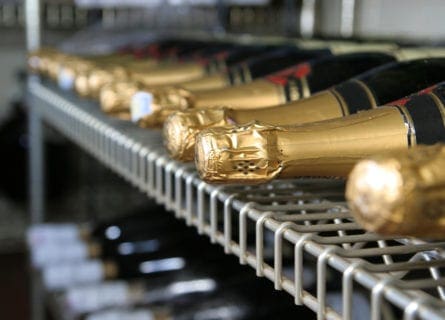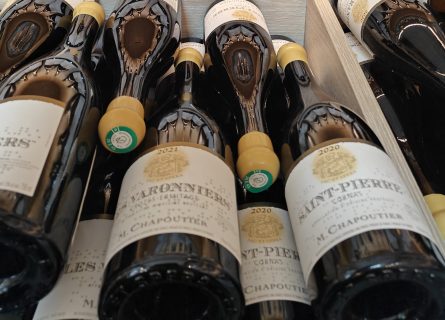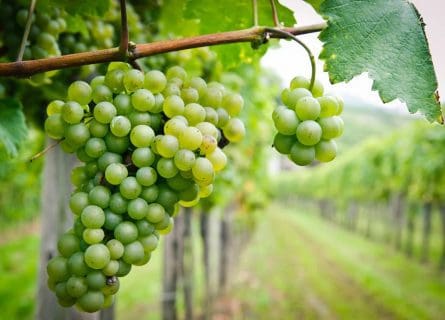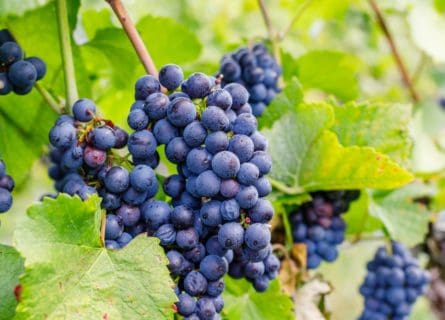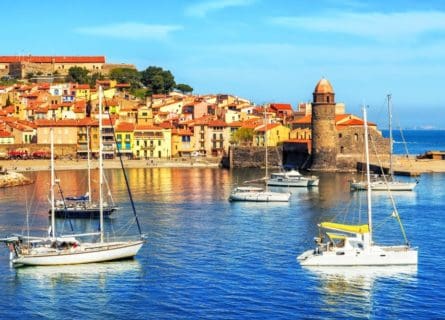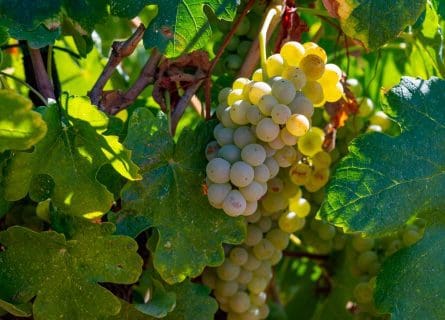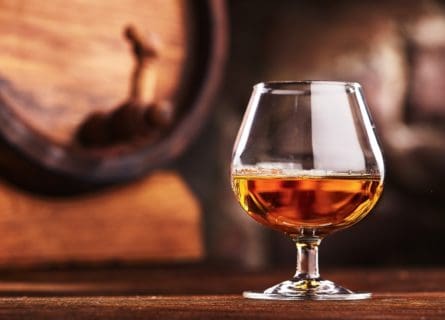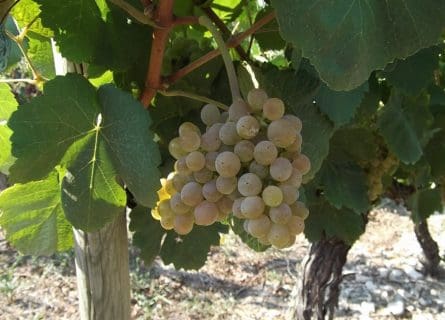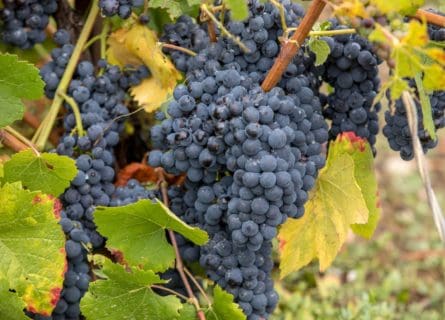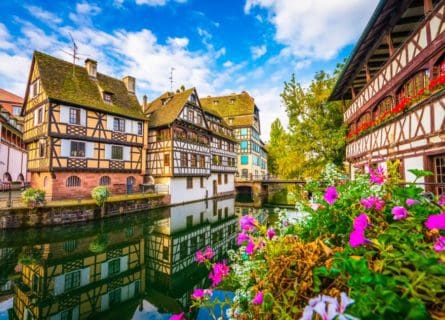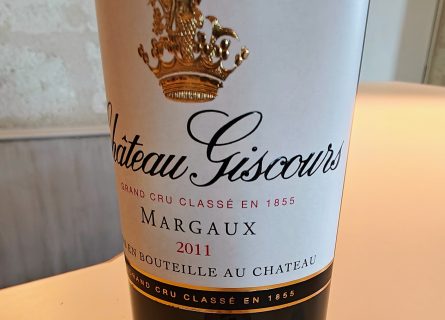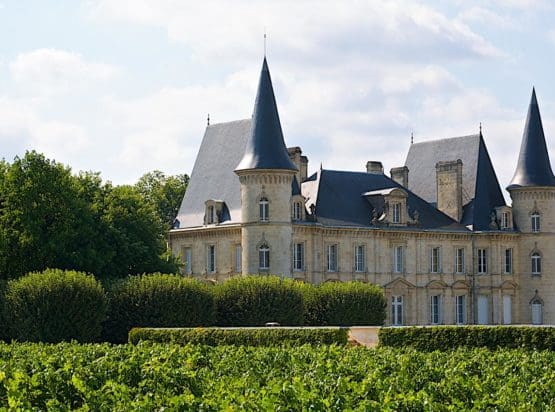
Chateau Mouton-Rothschild Winery Guide
EXPLORE ALL OUR RECOMMENDED FRENCH WINERIES
Last updated: August 13, 2024
Winery Overview
Opulent, luxurious, exotic, powerful – the list of adjectives used to describe Mouton-Rothschild are rarely imbued with subtlety. Yet there is no chicanery or exaggeration in claiming that this property is the most spectacularly opulent of all the Pauillac First-Growths. Critics are unanimous: tasted blind, Mouton-Rothschild often wears the guise of a Napa Cabernet, with powerful and exotic aromas of chocolate, coffee, damson, cigar box, and cedarwood. If collectors and Bordeaux aficionados desperately seek voluptuousness, toastiness, a healthy exoticism, and silky tannins, then Mouton should be their first choice.
However, despite its generous fruit profile and impressive weight, Mouton-Rothschild is quintessential Pauillac. The estate boasts a rich and colorful history – like the signature Grand Vin, Mouton-Rothschild has never hidden in obscurity or the shadows. The property’s name derives from the French word ‘motte,’ meaning mound, referring to the famous gravel croupes. History records that Joseph de Brane purchased the land in the early 18th century; by the end of that century, the wine was fetching prices equivalent to the best Second Growths. The Brane family decided to sell Mouton in 1830, and a Parisian banker called Isaac Thuret purchased the estate. Unfortunately, Thuret did little to improve the reputation of Mouton and decided to dispose of the vineyards in 1853.
Yet his decision ultimately proved to be the catalyst for Mouton’s glorious salvation. The purchaser of the property was Baron Nathaniel de Rothschild, from the English branch of the banking dynasty. Mouton is still owned by the same family today, who have invested over 150 years of time, energy, and money into this sacred vineyard. Nathaniel’s successor, Baron Philippe, was an enthusiastic and much-loved promoter of the wine, even during the Second World War! After the conflict broke out, Mouton was occupied by the Nazis, and the baron was imprisoned, although he managed to escape to Britain. Tragically, his wife Elizabeth died in a German concentration camp in 1945. Ironically, some excellent vintages were made during the war, including the legendary 1945 Mouton-Rothschild.
After the war ended, Philippe returned to his rightful place in Bordeaux. His contribution to Mouton’s reputation and global success cannot be underestimated; the winery was arguably Bordeaux’s first major tourist destination, as the baron created a lovely museum of wine artifacts and opened the estate to guided tours. In the 1970s, he demonstrated his business savvy and willingness to invest abroad when he partnered with Robert Mondavi to produce Opus One in Napa Valley. Sadly, he died in 1988, but his daughter, Philippine, was more than capable of continuing his great work. Apart from expanding and updating the facilities and wine museum, the inimitable Philippine created a Mouton white called Aile d’Argent in 1991, an exotic blend of Sauvignon Blanc, Sémillon, and Muscadelle.
Moreover, in 1993, Mouton took a brave step and started producing a second wine called Le Petit Mouton; for many years, former winemaker Philippe Cottin was unpersuaded by the case for a second wine. Yet today, it remains as popular as the Grand Vin. Philippine was succeeded by her son, Philippe Sereys de Rothschild, who continues to work with his sister and brother to maintain the impeccably high standards established by the legendary Philippe.
Most importantly, this remarkable family was determined to prove that Mouton-Rothschild was the First Growth in everything but official classification. Baron Philippe achieved what no other owner had ever done – petitioning the French authorities to reclassify Mouton-Rothschild as a First-Growth. In the 1855 Classification, the estate was classified as a Second-Growth, hardly a lackluster ranking, but nevertheless, it rankled with the baron. He doggedly pursued his promotion campaign, which was no easy task considering the intransigence of the French bureaucracy. However, his perseverance finally paid off in 1973. Jacques Chirac, then minister of agriculture, signed a decree elevating Mouton to the ranks of Premier Cru. The response of the baron has echoed through history: “Premier je suis. Second je fus. Mouton ne change.” Or, in other words – “First I am. Second I was. Mouton will not change.”
Indeed, despite the investment in modern equipment, new ideas, and ever-more sophisticated viticultural techniques, Mouton-Rothschild has a timeless quality. It remains a hallmark of superior terroir merged with First-Growth winemaking, resulting in a powerful, opulent, and utterly beguiling wine. Mouton owes much to its Grand Plateau, which lies west of the winery. This magnificent gravel terroir contributes so much to the signature wine style. Deep and expansive, it lies above iron-rich soils and clay, marl, and limestone subsoil. Combined with precise and sophisticated winemaking, this hallowed ground produces a wine like no other. Rich with the scent of ripe Cabernet Sauvignon, Mouton-Rothschild has the structure to last a lifetime. There are occasionally detractors, younger critics who may deride what they perceive to be an excess of richness and a lack of subtlety – yet this is the true beauty of Pauillac’s superstar First Growth. It inspires debate, excitement, differences of opinion, and passionate arguments, but never indifference or apathy. Mouton-Rothschild is a luxurious brand with intellect and authenticity to match.
Wines produced
-
Chateau Mouton-Rothschild (Grand Vin)
(Vintage dependant) but typical blend: 80% Cabernet Sauvignon, 9 % Merlot, 9% Cabernet Franc, 2% Petit Verdot. After careful hand-harvesting, the must is fermented in wooden vats. Indigenous yeasts are used whenever possible. After malolactic fermentation, the wine is usually aged in 95-100% new oak for 18 months. -
Le Petit Mouton (Second wine of the property)
(Vintage dependant) but typical blend: 70-80% Cabernet Sauvignon, 20-30% Merlot, 5-10% Cabernet Franc. After careful hand-harvesting, the must is fermented in wooden vats. Indigenous yeasts are used whenever possible. After malolactic fermentation, the wine is usually aged in oak barrels for 16-18 months. -
Aile d’Argent (white wine)
(Vintage dependant) but typical blend: 50% Semillon, 48% Sauvignon Blanc, 2% Muscadelle. The wine is fermented in stainless steel tanks, but not all the wine undergoes malolactic fermentation, to preserve acidity. The wine is aged in a varying percentage of new French oak before bottling.
Winery Contact Details
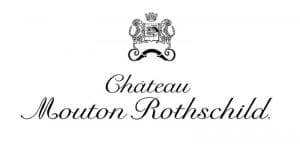
Chateau Mouton-Rothschild
Chateau Mouton-Rothschild33250 Pauillac
Bordeaux, France
Email: [email protected]
Tel +33 (0) 5 56 73 21 29
Fax Find out more
Facts & Figures
Appellation
AOC Pauillac / First Growth
Founded
1720
Area under Vine
83 hectares
Age of vines
Oak barrel origin
French
Winemaker
Philippe Dhalluin
Owner
Rothschild family
Production
320,000 bottles per annum
Grape varietals
Cabernet Sauvignon, Petit Verdot, Merlot, Cabernet Franc, Semillon, Sauvignon Blanc and Muscadelle
Grape Varieties Used by the Winery
-
Muscadelle
Muscadelle is a white grape varietal, primarily used for blending in the production of sweet white wines in the Bordeaux region.
Find out more -
Sauvignon Blanc
The sauvignon blanc grape varietal, originally from the Bordeaux region of France, is now one of the world's most loved white varieties.
Find out more -
Semillon
Explore the allure of the Semillon grape & its legendary connection to Sauternes. Unveil the history & flavors of this captivating varietal. Cheers!
Find out more -
Cabernet Franc
Cabernet Franc grape is a close relative of Merlot and Cabernet Sauvignon and is the principal blending grape used in Bordeaux.
Find out more -
Cabernet Sauvignon
Discover the irresistible allure of Cabernet Sauvignon—a worldwide favorite with robust, dark-bodied flavor. Unleash your wine journey today!
Find out more -
Merlot
Merlot is the most cultivated grape in Bordeaux and closely related to Cabernet Franc
Find out more -
Petit Verdot
Petit Verdot is a full-bodied red wine grape varietal used in classic Bordeaux blends and originates in southwestern France
Find out more
Winery Appellations
-
 Discover Pauillac, the crown jewel of Bordeaux wine regions—home to iconic estates like Chateau Latour & hidden gems. Plan your trip today! Read more
Discover Pauillac, the crown jewel of Bordeaux wine regions—home to iconic estates like Chateau Latour & hidden gems. Plan your trip today! Read more
Further Reading: Discover More Related Blog Content
More information
If you would like us to customize an exclusive luxury tour, contact us and let us know your travel plans. We offer luxury food and wine tours for private groups of a mininium two guests. In addition, all of our private, chauffeured tours are available year-round upon request.



